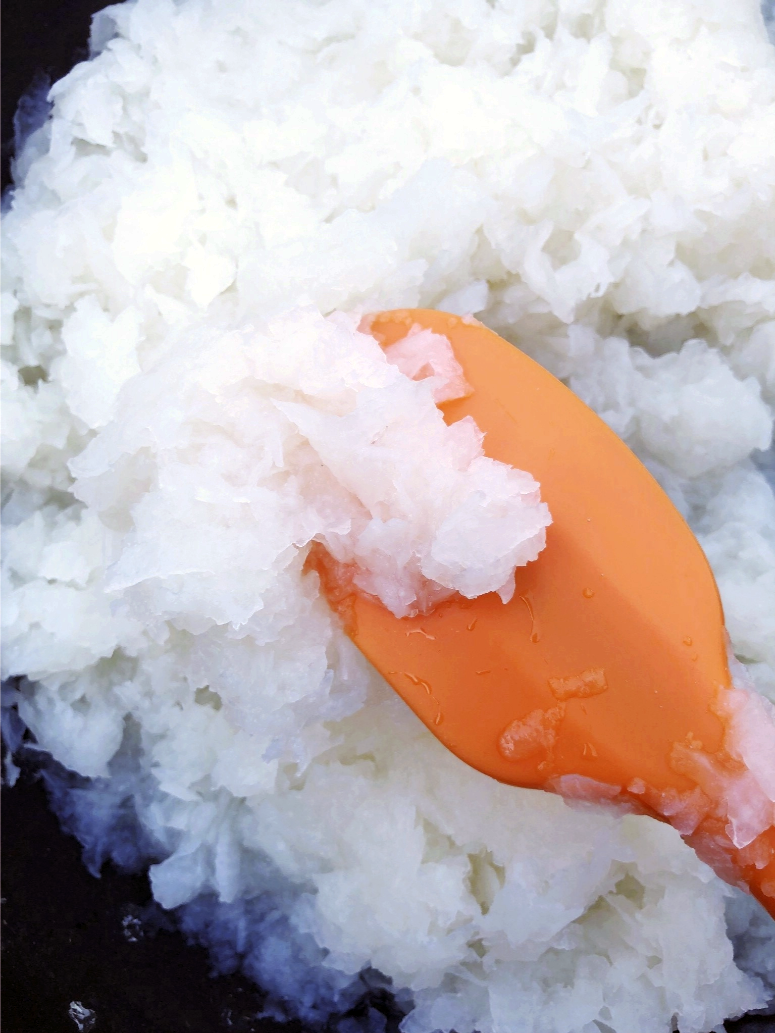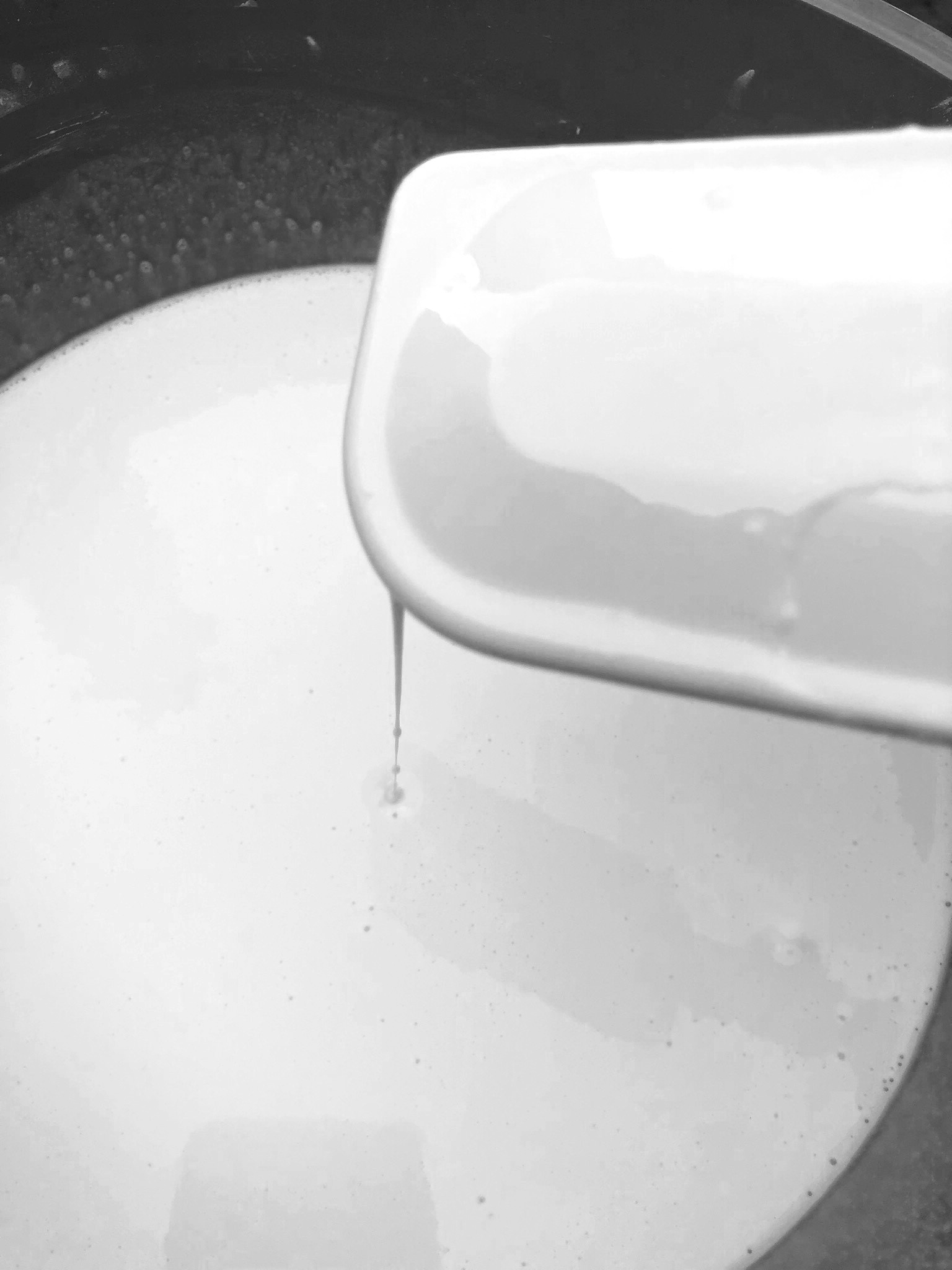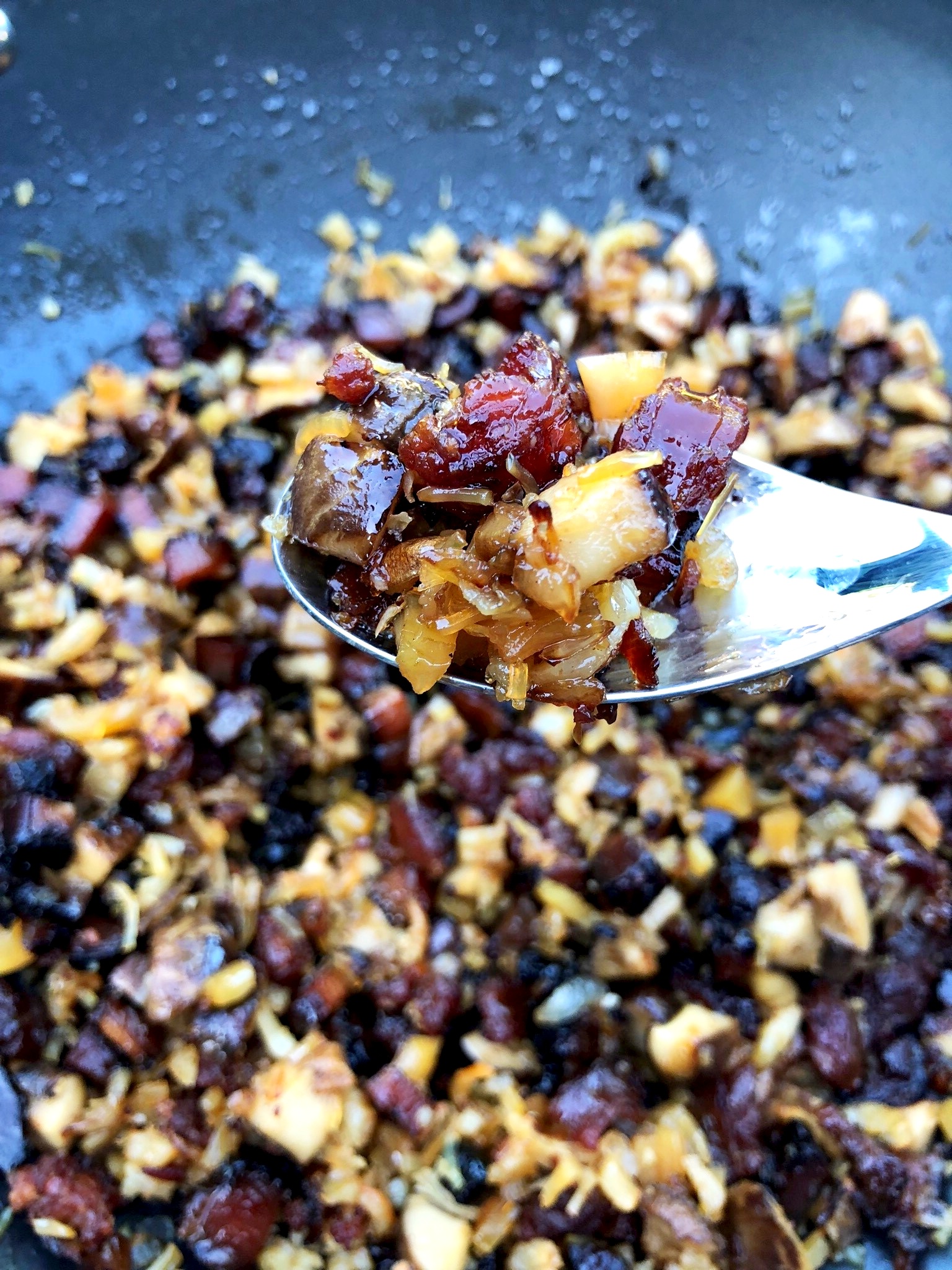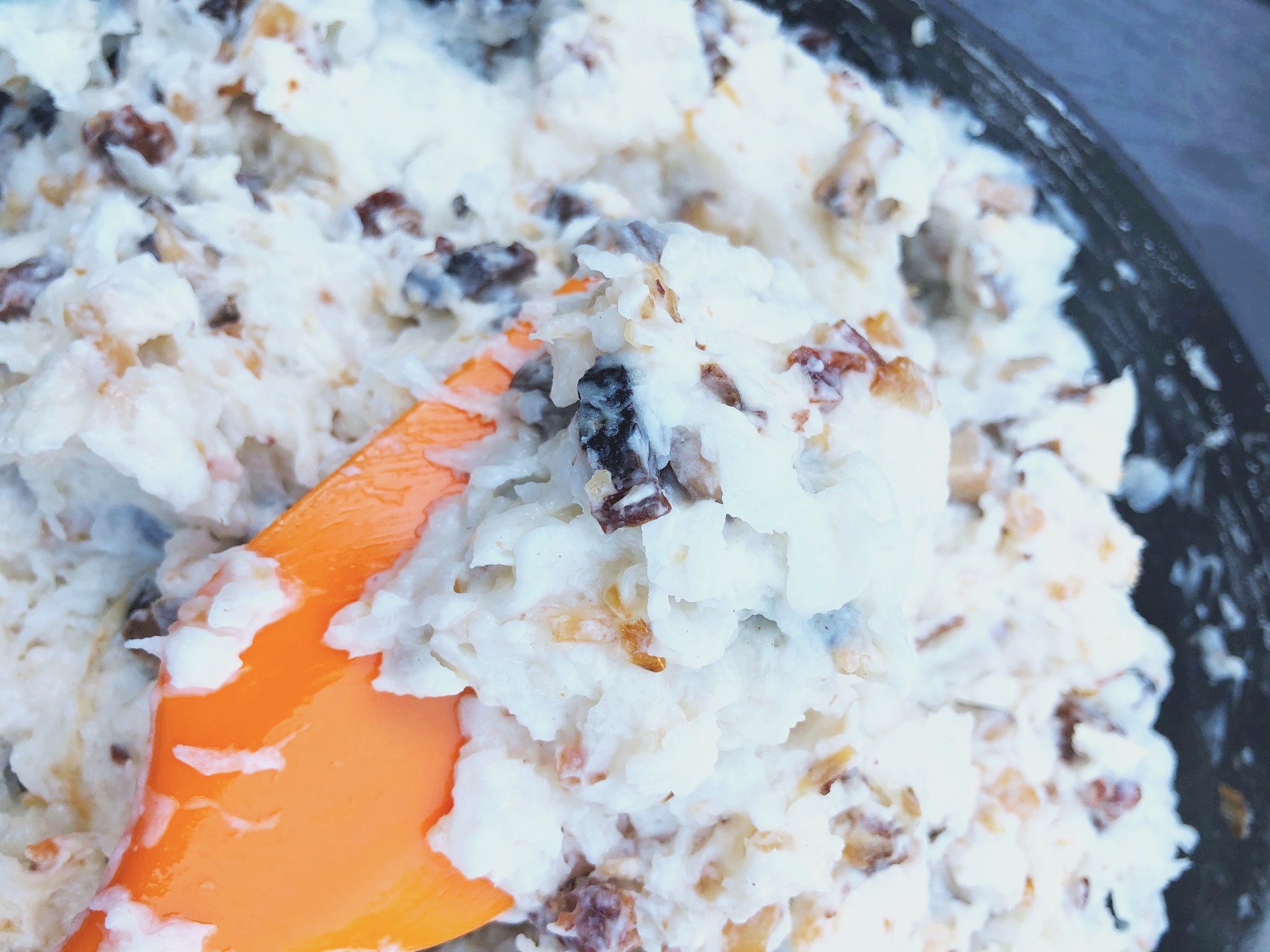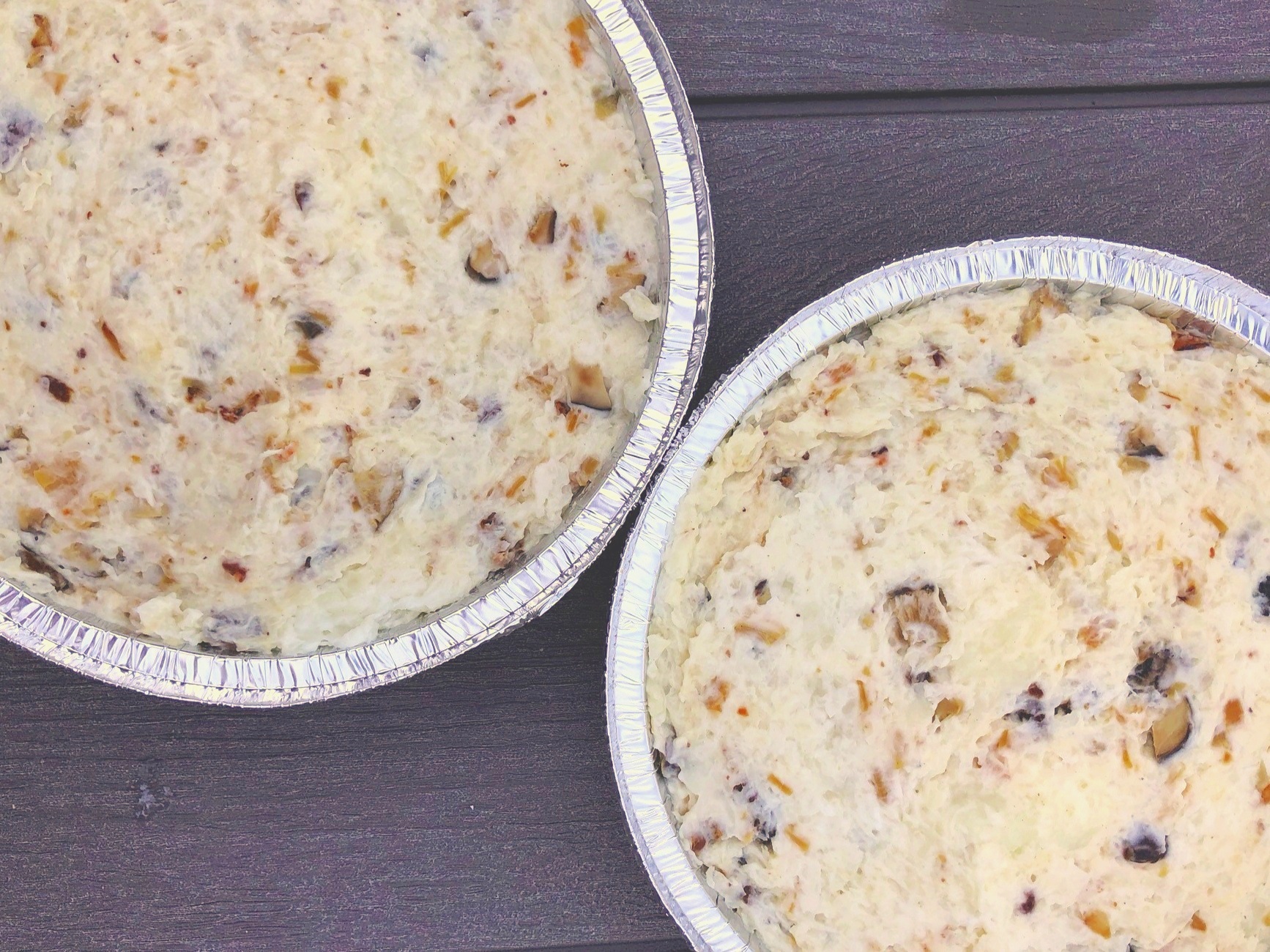PAN FRIED TURNIP CAKE AKA LAW BAK GO
Ever since I was a young child, my mother would recruit me a week before Chinese New Year as a prep cook. My main responsibility was to shred many pounds of daikon on a small box grater as she prepared the other ingredients for law bak go, one of my favorite foods of the holiday.
We would spend the next few hours cooking down the tall mountain of shredded daikon into a snowy puddle. The best part was watching my mother stir in the rice flour slurry with long wooden chopsticks and seeing the mixture thicken up. We made about 30 cakes every year. As family and friends came by the house to bless us for the New Year, she would kindly gift each of them one. She reserved only two cakes for our immediate family. On New Year mornings, she'd pan-fry the pieces and we'd eat them for breakfast, dipping the crispy golden pieces in oyster sauce.
These days, I am the one who makes law bak go from scratch and gifts them to family and friends. It's a true labor of love that's been passed on from generation to generation.
Pan fried turnip cake aka law bak go
Prep time: 45 minutes | Total time: 2 hours 45 minutes
Yields: Two 9-inch pans
Ingredients:
10 medium dried shiitakes (about 2 ounces; see Cook's Note)
1/4 cup dried scallops (about 1.5 ounces; see Cook's Note)
1/4 cup small dried shrimp (about 1 ounce; see Cook's Note)
4 pounds daikon, peeled and quartered
1 strip Chinese-style bacon (about 6 ounces), skin removed, cut into small dice (see Cook's Note)
2 links Chinese pork sausage (about 2.5 ounces), cut into small dice (see Cook's Note)
1 medium shallot, smashed and roughly chopped
1 1/2 cups cornstarch
1 1/2 cups rice flour
1 tablespoon chicken bouillon powder
1/2 teaspoon ground white pepper
1/2 teaspoon sugar, optional
Kosher salt
Vegetable oil, for coating and pan-frying
Oyster sauce, for dipping
Scallions, sliced on the bias, for garnish
Special equipment:
a wok
a steamer insert
two 9-inch round disposable aluminum pans
Instructions:
Put the dried shiitakes, scallops and shrimp in 3 separate small heat-safe bowls. Pour enough boiling water into each bowl to cover the ingredients, 1 1/2 to 2 cups. Set aside to soak, 20 to 30 minutes.
Meanwhile, using the large side of a box grater or a food processor with the shredder attachment, grate the daikon into shreds. This may take several batches; just transfer the shredded daikon to a large bowl and continue with the rest. Be sure to reserve all the liquid.
Heat a wok or large nonstick skillet over medium-high heat and add the shredded daikon with its liquid. Cook, stirring occasionally so the mixture doesn't burn or brown on the bottom, until the daikon is softened and cooked down by half and much of the liquid has cooked out, 20 to 25 minutes (see Cook's Note). The daikon should resemble something like sauerkraut. Set aside.
When the shiitakes are done soaking, remove them from the bowl; discard the liquid and mushrooms stems. Cut the mushroom caps into small dice. Discard the liquid from the dried scallops and shrimp and cut into small dice.
Heat a large skillet over medium-high heat. Add the bacon and cook, stirring occasionally, until some of the fat starts to render, about 3 minutes. Stir in the sausage and shallots and continue to cook until the sausage is slightly golden and more of the fat has rendered, about 3 more minutes. Add the shiitakes, scallops and shrimp, toss to coat in the fat and cook until the aromatics are slightly golden, 3 to 5 minutes. Set aside to cool slightly.
Fit a large wide pot with a steamer insert, fill with 2 to 3 inches of water and set over high heat. Cover and bring to a boil.
Combine the cornstarch and rice flour in a large bowl. Slowly add 2 1/2 cups of water and mix with a large rubber spatula until well combined. It will be very thick and difficult to stir, but as it slowly combines, it will become easier. The mixture should resemble a thick slurry. If it?s too thick, feel free to add an additional 1/4 cup water at the end to help bind everything.
Return the wok with the daikon to medium-high heat. Give the slurry mixture one last stir to make sure everything is mixed well, then pour it into the daikon. Cook, stirring with a large wooden spoon or large rubber spatula so the mixture does not set up, until the mixture is thickened and beginning to clump up, about 5 minutes; it should resemble grits or thick mac and cheese. Remove from the heat, add the bacon mixture and the fat from the skillet and stir to combine. Add the bouillon, white pepper, sugar if using and 1 teaspoon salt. Set aside.
Lightly coat two 9-inch round disposable aluminum pans with vegetable oil and divide the daikon mixture between the pans. Steam one pan at a time in the steamer, adding more water to the pot as needed, until a skewer or chopstick inserted in center of the mixture comes out clean, 25 to 30 minutes. Carefully remove the steamed daikon cake and transfer to a trivet and cool to room temperature. Repeat with the remaining pan.
When ready to serve, cut the daikon into 3-inch-long by 1/2-inch-thick pieces. Heat a large nonstick skillet over medium-high heat. Add enough vegetable oil to lightly coat the bottom. Once it starts to shimmer, add the daikon cake pieces in batches and pan-fry until golden brown on both sides, about 2 minutes per side. Transfer to a plate and serve with oyster sauce on the side. Garnish with sliced scallions.
Cook’s Note
The name of the cake withstanding, turnip cake is most often made with daikon radish. Dried scallops and dried shrimp are sold in many sizes; since you're chopping them up in this recipe, you can use the less expensive smaller varieties. Chinese-style bacon is cured and then dried; it's sold with the skin on. Use a sharp chef's knife to cut it off. Chinese pork sausage is sweet and dry but still easy to slice. Leftovers are delicious in fried rice. All the Chinese ingredients in this recipe can be found in a Chinese supermarket or online. The amount of time it takes to cook down the daikon depends on the quality of the vegetable; an older one will have less moisture and will take longer. A younger daikon will have more moisture.


